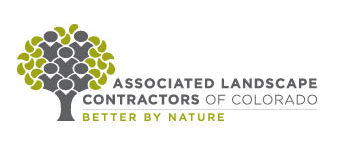| Training and communication |
 |
| Written by Daniel Grange |
| Tuesday, May 23, 2023 12:00 AM |
|
Up the ante for training and communication Immigration policy will loosen up soon. Availability of work visas will go down and demand will go up. Unemployment rates can’t possibly stay this low. High school kids will never do manual labor jobs again. These are the theories I have heard about the future labor market in our state and country. For readers with a crystal ball, feel free to move on to the next article. For the rest of us, I want to explore how we plan for our future workforce with so much uncertainty. Focus on what won’t change I know that some of us will make some smart choices in relation to a changing market. And, others may make the wrong moves. Instead of guessing about what will change, maybe we can look at our industry another way. According to Jeff Bezos, it may be more important to focus on what is not going to change in the coming years. I submit the following principles as unlikely to change for our employees, coworkers and future green industry workers. We need to:
Connect to people and keep it short As a father of two teenagers and staring down the barrel of two more, I can confirm one thing that is universally disliked by young people everywhere – listening to ‘old’ people talk about anything for more than 30 seconds. I would like to blame this on TikTok, Instagram and the proliferation of memes but I believe this was true when I was a teenager. It was likely true for generations before me as well. We all understand that our industry will suffer if we cannot attract more young people. But if we want to have effective communication with people still finalizing career choices, we need to tighten up our presentation. I would like to say that I have been consistently successful at creating a concise description of what I do, but more often I end up rambling and telling dumb stories without much connection to my audience. I see the best results when I focus on the things that mean the most to me – the satisfaction of transforming an outdoor space, working outside and the ability to give career opportunities to people from all walks of life. When I meet with high school students, I try not to tell them every avenue they could pursue and all the career paths they could take but tell them what I enjoy. The challenge for each of us is to reevaluate our elevator pitch as professionals, as companies and as an industry. The true value of training Although it is not evident when we see dwindling numbers at Spanish classes, or when we notice a foreman drifting off during an irrigation certification course, the desire for training is persistent in our workforce. Despite some discouraging anecdotes, the numbers are clear about employee training. Going back to a Pew Research* poll from 2016, “more than half (54%) of adults in the labor force say it will be essential for them to get training and develop new skills throughout their work life in order to keep up with changes in the workplace.” If we are not willing to offer training to our employees, we are sending the wrong message to a large part of the workforce. Some people will interpret poor training opportunities as a company’s desire to keep them stuck in their current role. Others might just see our organizations as stingy. To me, insufficient training shows an unwillingness to invest in the long-term success of the team. Sending your employees to a seminar or conference may not immediately manifest in increased sales or production. Yet, new content and information layers on top of on-the-job training to create a happier and more effective workforce. More importantly, I think the message it sends tends to last longer than many other benefits we offer. As you prepare for the busy season with more uncertainty than I can remember, my advice is to think about the enduring and less volatile aspects of what we do. I invite you to join me in providing more opportunities for training. We can also improve the way we present our industry to others, especially young people. We may not be able to predict the future, but we can prepare for the continuous challenges in growing and retaining the workforce. *https://www.pewresearch.org/social-trends/2016/10/06/the-state-of-american-jobs/ This article was featured in Colorado Green Magazine. Read more in this issue of Colorado Green Now: |


